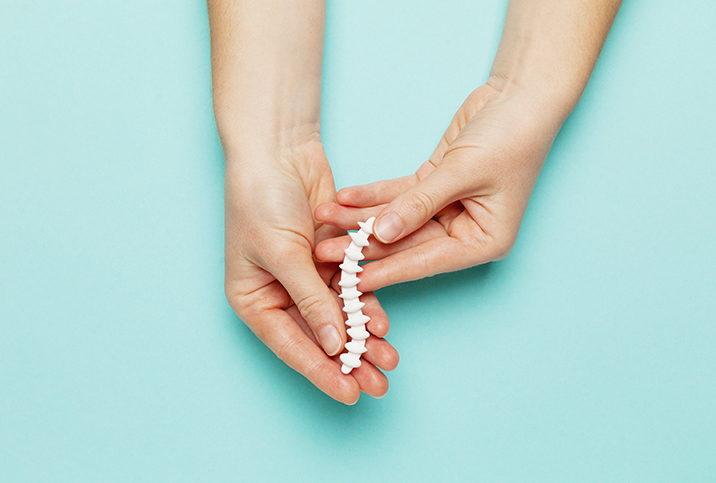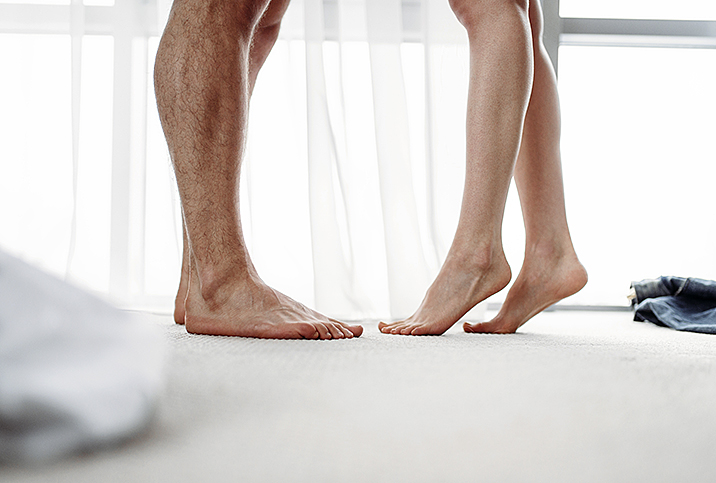Sex with Osteoporosis Requires a Different Kind of Safety

Osteoporosis is a bone disease characterized by a loss of bone mass and density that affects approximately 10 million Americans. While osteoporosis affects men and women of all races and ethnicities, Caucasian and Asian women—particularly postmenopausal women—are at the greatest risk. There are usually no symptoms in the early stages of osteoporosis. However, after the bones have been weakened by the disease, symptoms may include back and neck pain, loss of height and a stooped posture.
Steps to take
Having osteoporosis doesn't mean you can't have sex, but you will want to take some precautions. Osteoporosis puts you at greater risk for bone breaks, especially of the hip and spine. Studies have found that about half of women and as many as 1 in 4 men 50 and older will fracture a bone due to osteoporosis. To reduce that risk during sex, try the following:
Be aware of your limitations, and talk about them with your partner before engaging in sexual activity. It's important that your partner understands what your areas of pain and sensitivity are. Certain sex positions might cause pressure and lead to serious injury. If your osteoporosis is particularly severe, you could risk breaking a bone.
Use positions that are comfortable to you. Some sex positions are safer and more comfortable than others. The missionary position with the man on top can put a lot of pressure on the woman's hips. One of the safest positions is the opposite—for the woman to be on top of the man. This allows the woman to control what is comfortable for her. Lying on your side and facing each other is another less-strenuous position. Experiment to determine which positions are most comfortable for you and your partner.
Get creative. Intimacy is much more than just sexual intercourse. Kissing, touching, hugging, mutual masturbation and oral sex are all pleasurable activities that put much less pressure on the bones and joints. Have fun experimenting with your partner and see what new possibilities you discover.
Put pillows to use as props. Pillows and cushions can provide added support and comfort during sex.
Try heat therapy for pain. An electric blanket, heating pad, warm bath or shower can all reduce pain and stiffness.
Take care of yourself. Taking doctor-prescribed medications for osteoporosis, practicing regular strength training and eating a well-balanced diet can all benefit your overall health—including your sexual health.
Osteoporosis and erectile dysfunction
Some studies have suggested that men who have erectile dysfunction (ED), or the inability to achieve and maintain an erection during sex, are at a greater risk for osteoporosis. A study published in the Prague Medical Report indicated that men with ED have low bone mineral density and are at higher risk for osteoporosis.
Another study looked at data on more than 4,000 patients in Taiwan ages 40 and older diagnosed with ED over a 15-year period, as well as more than 17,000 patients without ED. An increased risk of osteoporosis was observed among patients with ED, particularly among men between the ages of 40 and 59. The researchers found that ED could be an early predictor of osteoporosis. Overall, osteoporosis was more than three times greater among men with ED than men without ED.
Although researchers say it's not clear if there's a causal link between ED and osteoporosis, they recommend that men with ED be checked for bone density and osteoporotic men be examined for ED.
Both ED and osteoporosis are treatable but require some effort to manage, as well as some adjustments to your sex life. With a positive outlook, a helpful and understanding partner and a willingness to explore new territory, you should be able to continue to enjoy sex despite some physical limitations, and you may even discover some exciting new methods and positions.

















